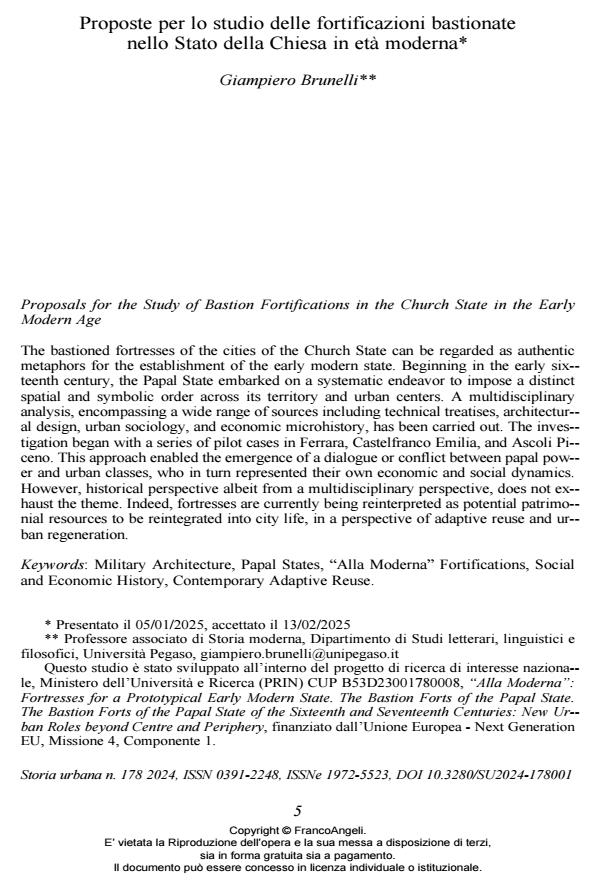Proposals for the Study of Bastion Fortifications in the Church State in the Early Modern Age
Journal title STORIA URBANA
Author/s Giampiero Brunelli
Publishing Year 2025 Issue 2024/178
Language Italian Pages 9 P. 5-13 File size 322 KB
DOI 10.3280/SU2024-178001
DOI is like a bar code for intellectual property: to have more infomation
click here
Below, you can see the article first page
If you want to buy this article in PDF format, you can do it, following the instructions to buy download credits

FrancoAngeli is member of Publishers International Linking Association, Inc (PILA), a not-for-profit association which run the CrossRef service enabling links to and from online scholarly content.
The bastioned fortresses of the cities of the Church State can be regarded as authentic metaphors for the establishment of the early modern state. Beginning in the early sixteenth century, the Papal State embarked on a systematic endeavor to impose a distinct spatial and symbolic order across its territory and urban centers. A multidisciplinary analysis, encompassing a wide range of sources including technical treatises, architectural design, urban sociology, and economic microhistory, has been carried out. The investigation began with a series of pilot cases in Ferrara, Castelfranco Emilia, and Ascoli Piceno. This approach enabled the emergence of a dialogue or conflict between papal power and urban classes, who in turn represented their own economic and social dynamics. However, historical perspective albeit from a multidisciplinary perspective, does not exhaust the theme. Indeed, fortresses are currently being reinterpreted as potential patrimonial resources to be reintegrated into city life, in a perspective of adaptive reuse and urban regeneration.
Keywords: Military Architecture, Papal States, “Alla Moderna” Fortifications, Social and Economic History, Contemporary Adaptive Reuse.
Giampiero Brunelli, Proposte per lo studio delle fortificazioni bastionate nello Stato della Chiesa in età moderna in "STORIA URBANA " 178/2024, pp 5-13, DOI: 10.3280/SU2024-178001